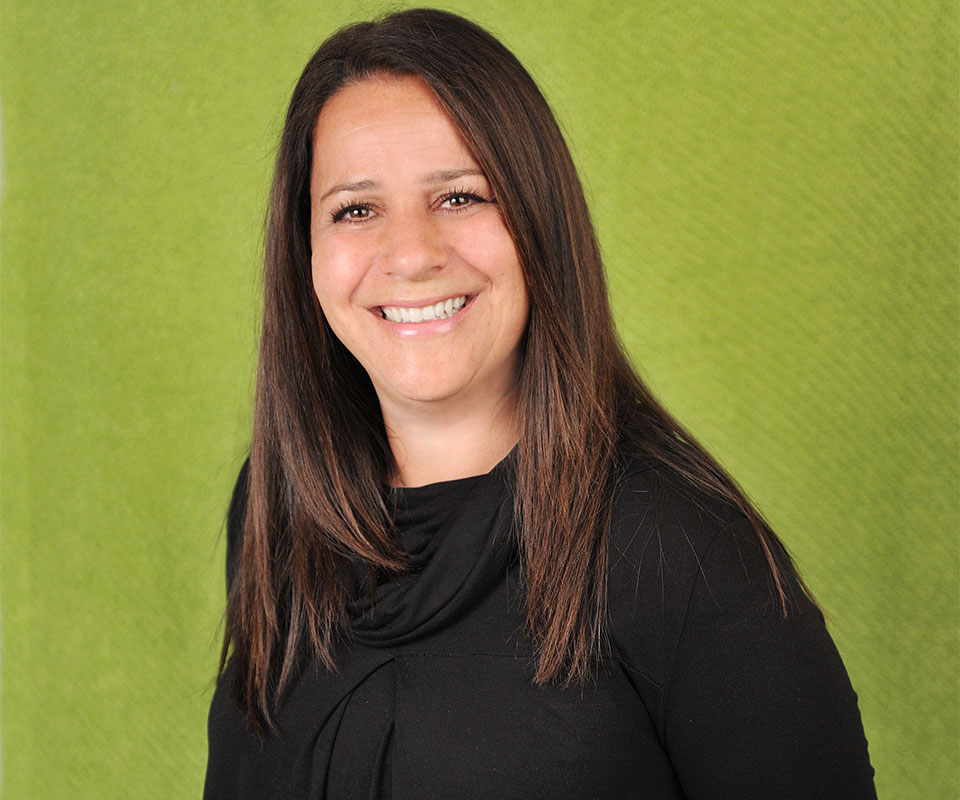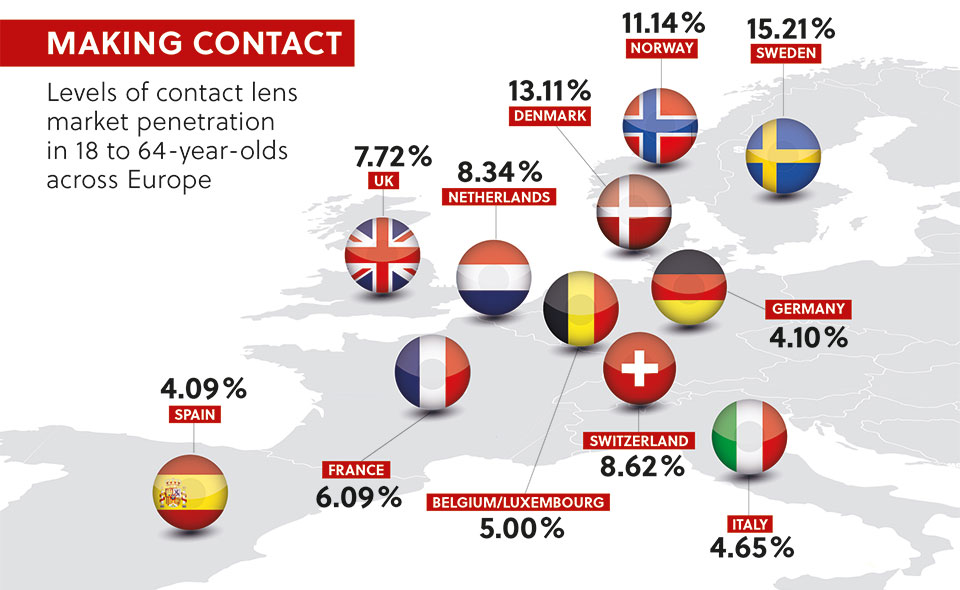- OT
- Science and vision
- Research
- World view
World view
Sweden leads an annual tally of contact lens penetration across 11 European nations, while Spain has the lowest proportion of contact lens wearers. OT talks with optometrists based in Stockholm and Madrid for their take on the trend

23 April 2018
Stroll through the streets of Stockholm and alongside the city’s landmarks an optometrist may take note of culture on a smaller scale.
Like a walk on a cloudy day in England without an umbrella, an eye care practitioner may have the distinct feeling that something is missing.
Where are the spectacles?
Residents in Scandinavian cities are generally more likely to put in contact lenses before heading out the door than in the UK, while the statistics suggest that the average person on the street in both countries is more likely to swap spectacles for contact lenses than in Spain.
A market analysis of 11 European nations by the European contact lens and lens care industry (Euromcontact) confirms that Sweden has the highest contact lens penetration while Spain takes the final spot.
Of Swedish residents aged between 15 and 64, around one in six (15.21%) wear contact lenses.
This drops to one in 12 in UK and the Republic of Ireland (7.72%), while in Spain, only one in 24 people on the street are likely to be wearing contact lenses (4.09%).
"I think parents are considering contact lenses for their children earlier and earlier"
From the UK to Stockholm
Stockholms Synklinik optometrist Michaela Nemes Dorsell (pictured below) studied optometry at City, University of London and worked in the UK for 12 years before moving to practise in Sweden.
Ms Dorsell shared that optometry in Sweden is less clinical than in the UK.
“People go to the optometrist or optician to have a sight test and that’s it,” she observed.
She added that in the past few years optometrists have taken on more tasks that are similar to a health check-up, but Swedish optometrists are not permitted to examine children under the age of eight.
They are not yet involved in extended care programmes such as glaucoma and diabetic screening.
“Our practice is the only optician practice in Stockholm that has ocular coherence tomography,” she shared.
At Stockholms Synklinik, Ms Dorsell mainly fits medical contact lenses but she also offers normal contact lenses to her customers.
Her practice has higher levels of monthly contact lens wearers compared to daily. Ms Dorsell noted that it is rare in Sweden for optometrists to fit rigid gas permeable lenses.

Sporty solution
She shared that the active lifestyle of many Swedish residents influences the high uptake of contact lenses.
“When you play a lot of sport it can be inconvenient to wear glasses,” Ms Dorsell added.
Outdoor activities, such as skiing and ice skating, are popular in Sweden, Ms Dorsell highlighted.
“If you have spectacles when it is cold outside, they fog up,” she said.
She also highlighted that there is a word-of-mouth effect, where people consider getting contact lenses because many of their friends wear them.
Ms Dorsell believes that parents are more relaxed about children wearing contact lenses in Sweden compared to the UK.
“I think parents are considering contact lenses for their children earlier and earlier,” she shared.
“I don’t have any problems giving contact lenses to kids if it is appropriate,” Ms Dorsell added.
"When it comes to health, most people want the best option, not the cheapest"
Madrid milestones
Elena Garcia Rubio is the director of the Instituto Nacional de Optometria in Madrid, which became the first private optometry practice in Spain when it opened in 1984.
The practice specialises in paediatric optometry, contact lenses and visual therapy.
Around 61% of contact lenses fitted by the practice are daily disposable, while 80% of children and teenagers fitted through the practice wear myopia control contact lenses.
Ms Rubio emphasised that the practice has a very low rate of contact lens drop-out and a high proportion of contact lens wearers.
She shared that contact lenses are considered as an option for almost all patients, regardless of their age or prescription.
The practice has organised an education programme for teachers and parents about myopia control and the importance of vision in the learning process.
Ms Rubio highlighted that in the context of statistics showing that Spain has a comparatively low contact lens penetration rate, her practice is not a typical example of how contact lenses are fitted in the country but it shows where the contact lens market in Spain is headed.

Breaking price barriers
She observed that in Spain most optometrists fit monthly contact lenses because daily lenses are more expensive.
The approach at her practice is to look for the best treatment option for patients, Ms Rubio added.
“Often we think the patient is going to refuse daily lenses because of the cost, but when we take the time to explain the advantages, money is not an issue anymore,” she explained.
“When it comes to health, most people want the best option, not the cheapest,” Ms Rubio added.
Asked for her take on why contact lens uptake is comparatively low in Spain, Ms Rubio highlighted her belief that optometrists do not give out enough information about contact lenses.
“In my practice I see people who have been wearing glasses for years and didn’t know they could wear contact lenses,” she shared.
This pattern is particularly evident in patients with astigmatism and presbyopia, Ms Rubio added.
Research conducted in 2016 found that a relatively high proportion of patients in Spain (42%) were willing to try contact lenses.
Ms Rubio highlighted that as well as willing patients, Spanish optometrists have a wide portfolio of lenses to choose from and opportunities to learn how to fit different types of lenses through manufacturers.
“We just need to start offering contact lenses to every patient that needs a prescription,” Ms Rubio observed.
Source: Euromcontact market data report 2017
Image credit: Nacho Urban


Comments (0)
You must be logged in to join the discussion. Log in